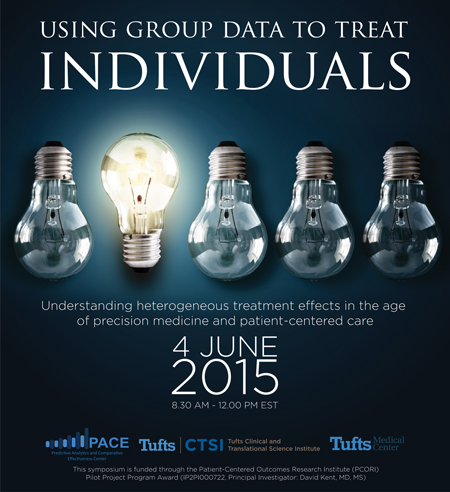Big Data and the Individual Patient
By Sandra J. Ackerman
The number-crunching power of large clinical trials can sometimes blur unique features that affect the outcome of treatment for a particular patient.
May 29, 2015
From The Staff Biology Medicine Genetics

You call it personalized medicine, I call it precision medicine—at least we can probably agree that the aim of healthcare is to provide each patient with the best possible treatment. Beyond this starting point, though, we head straight into another area of disagreement, namely, What do you or I mean by “best treatment”: Is it the treatment that works best on average, or the one that’s most likely to work in a specific individual? And how will we be able to tell the difference, when each patient has so many unique characteristics that can affect the risk level of the outcome and the potential benefits of therapy?
American Scientist entered this roiling debate a few years ago with an article by two eminent clinical researchers who were also practicing physicians. David Kent, then at Tufts Medical Center, and Rodney Hayward, at the University of Michigan VA Medical Center, proposed a shift in the way we think about clinical trials: “Because many factors other than the treatment affect a patient’s outcome, determining the best treatment for a particular patient is fundamentally different from determining which treatment is best on average.”
Fair enough, except that once you start taking each patient’s unique physiological state into account, the questions multiply into a medical hall of mirrors. It’s almost enough to bring on nostalgia for the good old days of “Feed a cold, starve a fever.”
But let’s not go back there just yet, because there may be a forum in which reasonable people can come together, plow through masses of data from innumerable clinical studies, and sort out which specific treatment tends to succeed under which particular circumstances, for which individual patients. As it happens, one of the lesser-known articles of the Affordable Care Act provides for just such a forum, the Patient-Centered Outcomes Research Institute. PCORI reviews and funds clinical studies to gauge the relative effectiveness of various treatments. A hypothetical example might be, say, research to determine how badly clogged a patient’s carotid artery must be in order to justify plaque-removing surgery—a procedure that can greatly reduce the risk of a stroke but that also carries significant risks of its own—rather than some other form of intervention that might be less drastic but also less effective.
PCORI also endorses another kind of initiative, “supporting not just clinical effectiveness research itself but the dissemination of the research,” says Kent, a professor of medicine at Tufts Medical Center and director of its Predictive Analytics and Comparative Effectiveness (PACE) Center. PCORI’s reasoning is that many different groups of people can benefit from hearing about such research: patients, healthcare providers, insurance purchasers and payers, drug and medical-device manufacturers, and policy makers, as well as other researchers.
To this end, an upcoming symposium will bring together members from each of these “stakeholder” groups (including me, representing American Scientist as part of the push toward dissemination along with patient advocacy groups, policy makers, clinicians, and others). I look forward to reporting on some lively back-and-forth: With presentations from experts in the analysis of evidence-based medicine, measuring quality in healthcare, preventing secondary stroke, and the application of genomics in public health, no one should be at a loss for data. Even better, with about an hour allotted for open discussion—including questions submitted online by people participating remotely—any and all viewpoints will be welcome. The symposium, scheduled for Thursday, June 4, 8:30 a.m. to 12 noon EST, is free and open to the public at the the Jaharis Building of the Tufts University School of Medicine, in Boston; anyone may register to attend in person or online.
Afterwards, “we hope to continue the conversation,” says Kent, so the symposium will be archived and made available afterwards. And of course I’ll offer my own take on the event as well. Stay tuned!
American Scientist Comments and Discussion
To discuss our articles or comment on them, please share them and tag American Scientist on social media platforms. Here are links to our profiles on Twitter, Facebook, and LinkedIn.
If we re-share your post, we will moderate comments/discussion following our comments policy.